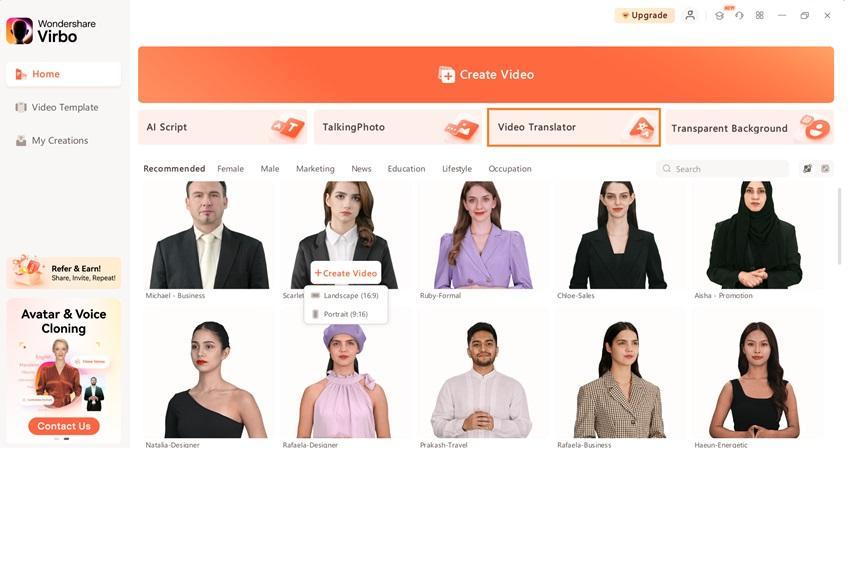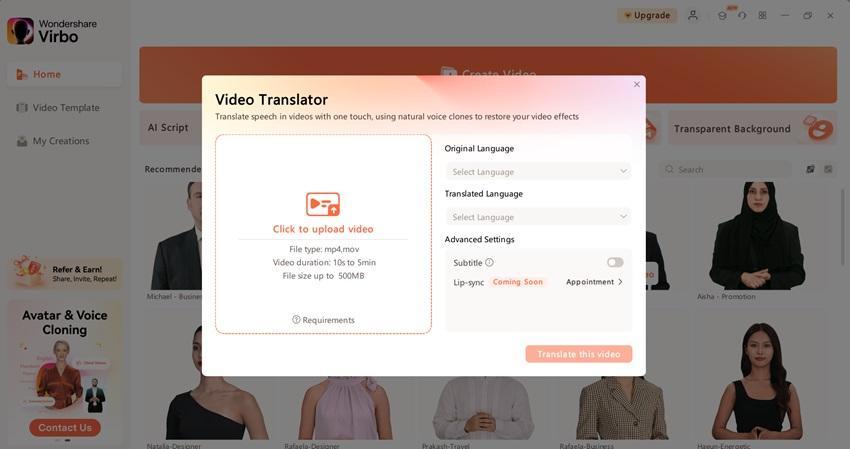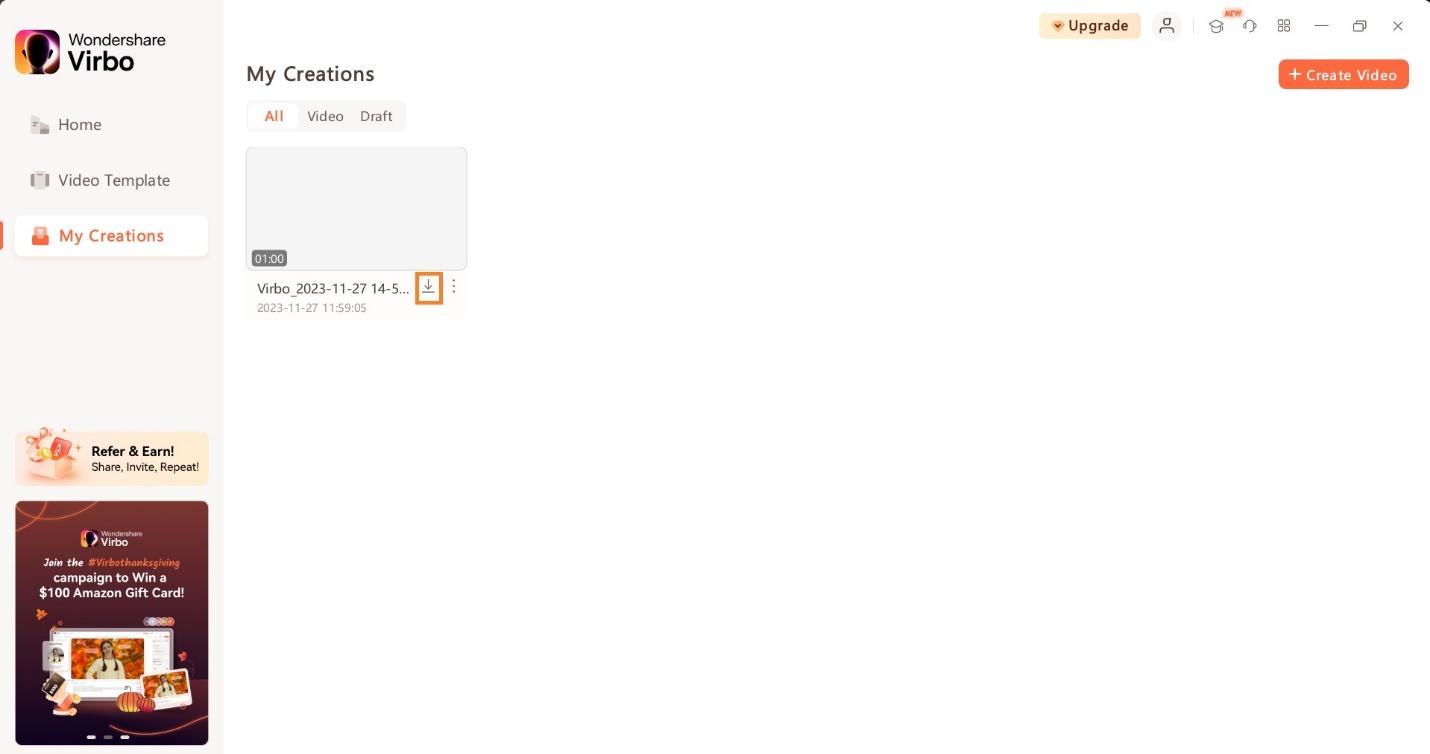AI has evolved every aspect of content generation, and the field of translation isn’t any different.
If your goal is to make the content heard to a broader audience, then you have to make sure that the content is understandable to your targeted audience. Since English is a universal language, it is a communication medium for diverse cultures.
Instead of applying the daunting translation approach, you can try Wondershare Virbo. It is a user-friendly, affordable AI video translation platform that can convert videos from any other language into English within seconds.
In this blog, we’ll discuss how to translate video to English with detailed steps.
Part 1: The Process of Video Translation
The traditional translation process for videos requires both resources and time. Initially, you need to hire your translator for a handsome amount and then give them at least a week to complete the process. Following is the step-by-step process of the traditional translation approach:
Initial Assessment: Detect the language and know about the targeted audience for video content
Transcription: Once you know the language spoken in the video, transcribe the audio into text word to word.
Translation: Now that you have the entire script on paper, translate the script into English and make sure the content is accurate and culturally appropriate.
Subtitling or Dubbing: Once the script is translated, incorporate it into dubbing or subtitles where the hand aligns with the audio.
The Role of AI in Translation
With the advent of artificial intelligence, every task is being automated. It helps streamline the entire process, helping you translate videos into English. Here’s the impact of AI in translation:
Automated Transcription: AI-powered tools swiftly transcribe spoken words, fulfilling the initial step’s requirement.
Translation Algorithms: AI algorithms increase translation speed and accuracy, helping to convert the script into English efficiently.
Human-like Dubbing: AI introduces natural-sounding voices for dubbing through voice synthesis, minimizing the need for manual recording.
Subtitle Generation: AI-driven tools help to generate and synchronize subtitles with the video to reduce any human invention.
Part 2: Virbo’s Video Translation Capabilities
Wondershare Virbo has actively advocated for the inclusion of AI in content generation. It is an all-in-one platform that helps you automate every aspect of video editing using AI. Virbo supports various languages, offering versatility for content creators.
Following are some of the features of Virbo’s video translation capabilities:
- Intuitive User Interface
Virbo features a user-friendly interface that simplifies the translation process so that content creators with every level of technical expertise can access it without any hassle.
- Accuracy and Precision
Wondershare Virbo uses advanced translation algorithms to deliver precise translation with contextual accuracy to convert video content from any language into English.
- Multilingual Support
Virbo is trained in various source languages to provide a versatile solution for translating videos from a diverse range of original content into English.
- Time-Saving Automation
Virbo’s automation features significantly reduce the time required for translation to help content creators deliver English-translated videos without sitting for long hours.
Part 3: Guide for Using Virbo for Video Translation
Wondershare Virbo makes it easy to translate your videos quickly into English using diverse tools and features. Below is the step-by-step guide on video translation in Virbo:
Step 1: AI Video Translation Section
On the homepage of the Wondershare Virbo app, locate the Video Translator button and click on Upload video.
translate-into-english-ai-1
Step 2: Upload Video
Choose the video that you want to translate into English.
Step 3: Choose Language
Choose the language in which your video is recorded initially from the list of languages to inform the Virbo algorithm about the source language. Also, specify English as the language for translation.
translate-into-english-ai-2
Step 4: Translate
Click the Translate button to automate video translation. Once translated, edit and adjust the video to maintain coherence.
Step 5: Download and Share
After completion, click the EXPORT button to save the video on your device or directly share it on your social media.
translate-into-english-ai-3
Following are some tips to enhance translation quality and relevance:
- Consider societal and cultural differences for your targeted audience to avoid misinterpretations.
- Create and maintain a glossary of industry-specific or brand-specific terms to maintain translation consistency.
- Use human review to catch errors and idiomatic expressions that AI tools might overlook.
Bonus: The Evolving Landscape of Video Translation
As we progress, AI will continue to improve and bring unique features to video translation. Aside from more accuracy, the advanced machine language algorithms and integration with other technologies, like neural machine translation engines, will refine the translation process.
Quality assurance features in video translation will also improve so that it can detect errors like untranslated parts or inconsistent translations. Moreover, real-time translation during live events will be seamless to enhance global reach.
As technology transforms, the goal is to make content accessible to all. That’s why it is crucial to increase the efficiency of video translation to cater to diverse linguistic needs.
Conclusion
Translating videos into English expands your audience reach and helps to connect your message with people around the world. It breaks down language barriers for better understanding and engagement.
Using advanced AI video translation tools like Wondershare Virbo streamlines this process. It incorporates a user-friendly approach and advanced translation algorithm to make video translation efficient.
So, whether sharing stories, promoting a product, or reaching global viewers, translating videos with tools like Virbo is your key to a more connected and impactful digital presence.




0 Comments